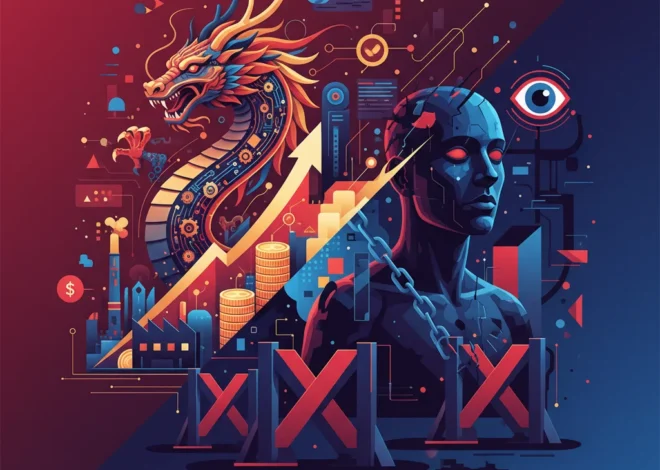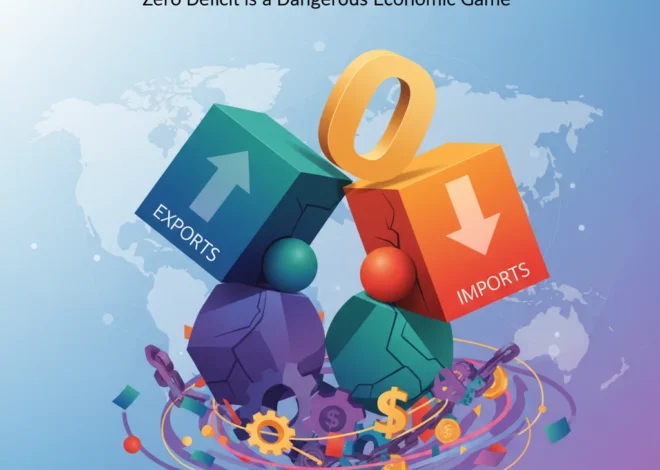
Solving the Market’s Crossword: A Strategic Guide to Today’s Financial Puzzles
The Daily Ritual: From Crosswords to Capital Markets
For many professionals, the day begins with a ritual. It might be a cup of coffee, a review of morning headlines, or for the intellectually inclined, a go at the daily crossword. The Financial Times crossword, in particular, is a bastion of cerebral challenge, a daily puzzle box of interlocking words and ideas. Much like this intricate grid of clues, the global financial landscape presents its own complex puzzle. Every day, investors, business leaders, and finance professionals are tasked with deciphering interconnected clues—economic data, market sentiment, technological shifts, and geopolitical events—to build a coherent picture of risk and opportunity.
Navigating the modern economy is not a simple linear process; it’s a multi-dimensional challenge. An answer in one corner of the grid (a central bank’s interest rate decision, for instance) directly impacts the potential answers in another (the growth prospects for tech stocks). Success in this arena, much like in solving a cryptic crossword, requires more than just knowing the definitions. It demands pattern recognition, lateral thinking, and an understanding of how disparate pieces fit together to form a whole. This article uses the framework of a crossword puzzle to explore the key “clues” that today’s market participants must solve to navigate the worlds of finance and investing.
Across Clues: The Macroeconomic Framework
The “across” clues in our financial crossword are the broad, overarching themes that stretch across the entire grid. These are the macroeconomic factors that define the playing field for every asset class, from the stock market to private equity. Ignoring them is like trying to solve a puzzle without understanding its fundamental rules.
1. The Inflation and Interest Rate Enigma
For the past few years, the dominant “across” clue has been inflation. Once a dormant economic force, its resurgence has forced central banks into a delicate balancing act. The moves made by institutions like the Federal Reserve and the European Central Bank ripple across the entire financial system. Higher rates can cool an overheating economy but also stifle growth and increase the cost of capital for businesses. For investors, this clue intersects with every other decision. How do you value a growth company when its future cash flows are discounted at a higher rate? Which sectors are resilient in an inflationary environment? Understanding the nuances of monetary policy is no longer optional; it is the foundational context for all investing decisions.
2. Geopolitical Fault Lines
From trade disputes to military conflicts, geopolitical events are powerful, board-spanning clues. These factors introduce volatility and can fundamentally reshape supply chains, energy markets, and international banking flows. A conflict in one region can send commodity prices soaring, while a new trade agreement can unlock growth in another. Astute investors must think like political strategists, analyzing not just the economic data but the shifting alliances and tensions that can render even the most elegant financial model obsolete overnight. The interconnectedness of the global economy means that a political tremor on one side of the world can cause a financial tsunami on the other.
The Ethereum Paradox: Why Market Panic May Be Masking a Quiet Accumulation
Down Clues: Deep Dives into Sectoral Disruption
While “across” clues set the stage, the “down” clues represent the vertical, sector-specific trends that offer unique opportunities and risks. These are the areas where innovation and disruption are creating new winners and losers. Solving these requires specialized knowledge and a forward-looking perspective.
1. The Fintech and Blockchain Revolution
Nowhere is the pace of change more rapid than in financial technology. The fintech revolution is fundamentally rewriting the rules of banking, payments, and wealth management. What began with simple online trading platforms has evolved into a complex ecosystem of neobanks, AI-driven lending algorithms, and decentralized finance (DeFi) protocols. According to one industry report, the global fintech market is projected to grow to nearly $700 billion by 2030, a testament to its disruptive power (source).
Within this space, blockchain technology remains a particularly cryptic clue. While often associated with volatile cryptocurrencies, its underlying potential for creating secure, transparent, and efficient systems is immense. From tokenizing real-world assets to streamlining cross-border payments, blockchain is a foundational technology that could redefine the infrastructure of finance. Investors must look past the speculative frenzy to understand its long-term utility.
2. The ESG Integration Imperative
Environmental, Social, and Governance (ESG) factors have evolved from a niche concern to a critical “down” clue for mainstream investing. The understanding that sustainable and ethical practices can be directly linked to long-term financial performance is now widely accepted. Companies that effectively manage their environmental impact, foster positive social relationships, and maintain high standards of governance are increasingly seen as less risky and better positioned for the future. As global regulations tighten and consumer preferences shift, a company’s ESG profile is becoming as important as its balance sheet. This requires a new layer of analysis, moving beyond traditional financial metrics to assess a company’s resilience and social license to operate.
To illustrate the difference, consider how an analyst might approach a company using these two lenses:
| Metric Category | Traditional Analysis Focus | ESG-Integrated Analysis Focus |
|---|---|---|
| Financial Performance | Revenue, EPS, P/E Ratio, Debt-to-Equity | Same as traditional, plus revenue from green products, carbon pricing impact |
| Risk Assessment | Market volatility, credit risk, liquidity risk | Climate transition risk, regulatory penalties, supply chain labor practices |
| Governance & Strategy | Board structure, executive compensation | Shareholder rights, board diversity, business ethics, long-term incentive alignment with sustainability |
| Long-term Outlook | Competitive advantage, market share | Resource sustainability, brand reputation, stakeholder relations, adaptability to new regulations |
3. The AI-Powered Market
Artificial Intelligence is arguably the most transformative “down” clue of our time. Its impact on the financial industry is profound and multifaceted. AI is no longer the stuff of science fiction; it is a practical tool being deployed across the sector. Algorithmic trading now accounts for a significant portion of stock market volume. AI-powered platforms can analyze vast datasets—from earnings reports to satellite imagery of parking lots—to generate unique investment insights. In fact, a recent survey found that 85% of financial services executives are already using AI to automate processes and enhance decision-making (source). This shift is creating a new arms race, where the firms with the most sophisticated data science capabilities gain a significant edge.
Connecting the Grid: The Art of Synthesis
The true genius of a crossword solver lies not in answering individual clues, but in seeing how they intersect. Answering an “across” clue provides letters that help solve multiple “down” clues, and vice versa. The same is true in finance. These trends are not isolated; they are deeply intertwined.
Consider the connections: A central bank’s policy on interest rates (“across”) directly affects the valuation and funding environment for capital-intensive fintech startups (“down”). Geopolitical tensions over resources (“across”) accelerate the corporate world’s focus on supply chain resilience and ESG factors (“down”). The development of AI (“down”) is being used to better model and predict the impact of macroeconomic shifts (“across”).
A successful investment strategy is built on this kind of synthesis. It’s about understanding that the world of economics and finance is a complex, adaptive system. A portfolio that is only optimized for one set of clues—for instance, one that is heavily invested in tech without considering the macroeconomic interest rate environment—is brittle and vulnerable. A robust strategy, by contrast, is diversified not just across asset classes, but across an understanding of these interlocking themes.
The New Atomic Balance Sheet: How a Looming Arms Race Impacts Your Investment Portfolio
The Never-Ending Puzzle
The beauty—and the challenge—of both a great crossword and the financial markets is that there is always a new one tomorrow. The puzzle is never truly “solved.” The clues change, new words enter the lexicon, and the rules of the game evolve. The rise of financial technology, the mainstreaming of ESG, and the pervasive influence of AI are not final answers; they are simply the major clues in today’s version of the puzzle.
For investors, business leaders, and anyone seeking to build and preserve wealth, the key takeaway is the importance of intellectual curiosity and continuous learning. The strategies that worked yesterday may not work tomorrow. The ability to remain flexible, to synthesize information from disparate fields, and to appreciate the intricate connections that bind the global economy is the ultimate skill. It’s the difference between filling in a few random answers and seeing the elegant, completed grid in its entirety. The puzzle is out there, waiting to be solved. Are you ready to pick up the pen?


